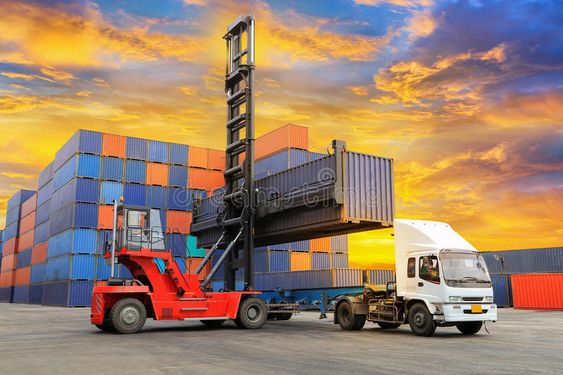Shipping goods to Germany has never been more accessible, thanks to freight forwarding apps that streamline logistics. Knowing how to ship through freight forwarding apps to Germany empowers businesses to manage shipments efficiently, compare rates, and track deliveries in real time. This guide walks you through the essential steps to leverage these apps for seamless German logistics.
1. Choose the Right Freight Forwarding App
Compare Key Features
Research apps like 17TRACK, ShipBob, or Freightos that specialize in Germany-bound shipments. Look for features like real-time tracking, multi-carrier comparisons, customs documentation support, and German-language interfaces.
Check Coverage and Reviews
Ensure the app covers your origin (e.g., China) and destinations in Germany (e.g., Hamburg, Frankfurt). Read user reviews to gauge reliability, especially for customs clearance and last-mile delivery.
2. Create an Account and Profile
Sign Up and Verify
Download the app and create a business account using your company email. Verify your credentials to unlock features like bulk shipping and priority support.
Input Shipping Preferences
Update your profile with regular shipment details (e.g., cargo type, average weight, preferred ports/airports in Germany). This helps the app generate tailored quotes.
3. Generate a Shipping Order
Enter Cargo Details
Use the app’s “Create Shipment” feature to input product descriptions, weight, dimensions, and value. For example, specify if you’re shipping electronics (requiring CE certification) or textiles.
Select Transport Mode
Choose between air freight (5–10 days to Frankfurt), sea freight (25–40 days to Hamburg), or express delivery (3–7 days) based on urgency and budget. Apps often display live rates from carriers like DHL or Maersk.
4. Review and Confirm Logistics Details
Compare Quotes and Incoterms
Apps typically provide multiple quotes from different forwarders. Compare costs, transit times, and Incoterms (e.g., FCA Shanghai or DAP Berlin) to clarify liability for shipping and customs.
Add Insurance and Extras
Opt for cargo insurance (e.g., All Risks coverage) within the app to protect high-value goods. Some apps offer add-ons like temperature-controlled storage or customs brokerage services.
5. Manage Documentation Through the App
Auto-Generate Paperwork
Most apps auto-generate commercial invoices, packing lists, and certificates of origin. Ensure German customs requirements are met, such as including HS codes and bilingual labels.
Submit to Customs Electronically
Use the app’s built-in customs submission tool to upload documents directly to German customs (Zoll). This reduces delays compared to manual processing.
6. Track Your Shipment in Real Time
Use Live Tracking Tools
Apps like 17TRACK provide end-to-end tracking, showing milestones like “Departure from China,” “Arrival at Hamburg Port,” and “Customs Clearance Pending.”
Set Up Alerts
Enable push notifications or email alerts for key events, such as delays in customs or delivery confirmations in Germany.
7. Handle Customs Clearance and Payment
Pay Duties and VAT Through the App
Many apps allow direct payment of German customs duties (avg. 5–10%) and VAT (19%) via credit card or bank transfer. This ensures smooth release of goods.
Resolve Disputes Promptly
If issues arise (e.g., damaged cargo), use the app’s dispute center to communicate with forwarders or carriers. Most apps have dedicated support for German shipments.
In conclusion, mastering how to ship through freight forwarding apps to Germany simplifies cross-border logistics by centralizing quote comparisons, documentation, and tracking. By choosing the right app, inputting accurate details, and leveraging real-time tools, you can reduce costs and enhance efficiency. For personalized support with complex shipments, companies like China Top Freight offer integrated app-based solutions tailored to Germany’s logistics landscape.


